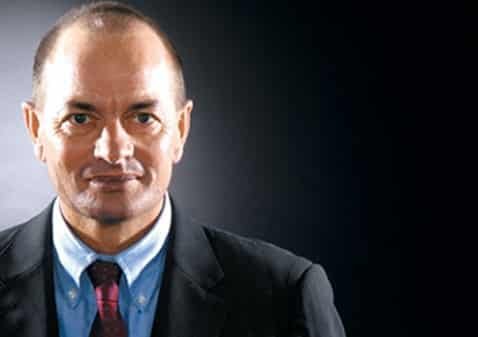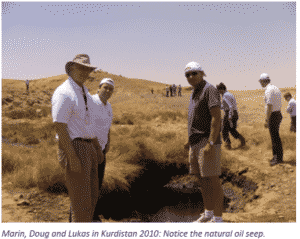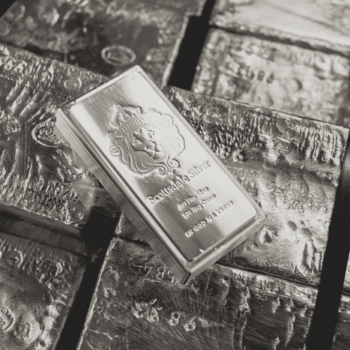
Lukas Lundin Raw: Part 1-Oil
If you’ve invested in mining, you’ve most likely heard of the Lundin family. If not, you need to. This piece will give you my take on the serially successful Lundin Empire.
The patriarch of the Lundin resource empire is Lukas Lundin. If anyone lives his life by the mantra, “Fortune Favors the Bold”, it’s Lukas. He’s worth listening to.
What follows is an inside view on what Lukas Lundin is thinking and doing now to position his resource empire to benefit from the current down markets. You will want to pay attention, as the knowledge Lukas shares in this exclusive interview will have considerable implications for your own portfolio over the next few years.
I’ve known Lukas since 2006. My first direct business dealing with him was on the opposite side of the negotiating table in late 2008. Over the last decade, I have negotiated with the best and brightest in the resource sector, and not one of them had a quicker mind than Lukas.
Lukas is in a class of his own. These three qualities really differentiate him from his peers: his ability to absorb information, to recognize value, and to walk away from a deal if the terms aren’t favorable to the Lundin shareholders.
Some background on my first direct dealing with Lukas.
In 2007, I was heavily invested in a private company called Turkana Energy. I was involved in the initial first two rounds of capital-raising required for the acquisition and preliminary exploration on a 10BB oil block in Kenya. By the fall of 2008, the company needed to raise another $10 million. I, along with a few other key large shareholders, took the initiative to take the company public. Unfortunately, oil was below $40/bbl at the time, and the market appetite was essentially zero for any early stage international exploration companies.
That’s when I came up with the plan to pitch Lukas.
But first, I knew I had to sell Keith Hill, one of Lukas’s key oil executives. Keith is smart and very trustworthy, and I called him up and explained my plan to him. Now, it’s no secret that Keith Hill is a close friend and mentor of mine (except at the poker table, where I mentor him). So Keith, being the good friend he is, made time to hear my pitch and concept. I put together a whole report to walk Keith through the value of the 10BB block. Keith, also being the shrewd oil man he is, played it down to me.
But I don’t take no for an answer lightly, so I kept pestering Keith, and that’s when he said, “Let’s talk to Lukas”.
The resource markets were in an awful state in late 2008, even worse than the current down market. Lukas listened to my pitch, had a whole list of questions, and after hearing my price, said “No”.
My heart sank.
I took it personally; not only did I have a lot of my own money in the deal, I had my fund, my friends, family and loyal subscribers in there with me at the same price. I had to make this work.
After picking the pieces of my ego off the floor, I tweaked my proposal, and met with Keith and Lukas again. Again, we went through the metrics, the geology, the potential, and after going through my whole deck, Lukas, again, said no.
I left with my tail between my legs. I was frustrated and pissed off. During the walk back to my office on that miserable rainy Friday afternoon, I knew I had to redo my pitch deck and give it one more shot. Perhaps it was my naïveté, or my lack of experience at the time, or my sure belief in the project, but I didn’t give up. A month later, we did a third meeting, and we finally agreed on terms, after a much heated verbal debate.
The Benefit of Time
After we agreed on a deal, Lukas and Keith worked out a plan on the structure and capital that would be required to give the 10BB block—and the whole concept of the East African Rift that would eventually became Africa Oil—a real shot at success. Boy, were they ever spot on.
Within a few years of that initial private placement in early 2009, Africa Oil made the world’s largest onshore oil discovery in a decade. The Lundins were able to attract a deep pocket oil company to farm into the project, which reduced the risk and cost for Africa Oil shareholders.
Naturally, my recent interview with Lukas started with oil, and his thoughts on the North American, European and international oil markets. The following is a summary of that interview.
US Shale Oil
Lukas hasn’t participated in the US shale sector. Why?
His team did not have a technical advantage over the peer group exploring the shale formations in the US and Canada, thus he stayed away. Rightly so. He does believe that the incredible success of the unconventional oil production will continue to slow down.
In the past, the shale oil producers were rewarded on production, not on delivering profits for their shareholders. The Lundin family is always one of, if not the largest group of shareholders in their own deals, thus the decisions his companies make are always in the best interest of the shareholders. Reality has now set in for the US shale oil sector.
Flash oil is where the bulk of shale oil wells’ production happens in the first year, and then production declines significantly. As a result, there will be a slowdown in the US shale sector. The decline of oil production from current levels will be in the range of 200-500,000 bopd within the next 12 months.
Lukas believes that the price of oil will eventually find a range between $70-80 per barrel within the next 18 months. But even with oil in the $70-80 range, the early stage US shale companies will have a difficult time attracting capital.
Why?
Because the shale oil producers failed so miserably to return profits to shareholders in the first shale run with oil above $90/bbl, and because the days of QE benefits flowing into the oil patch are behind us. I agree 100% with Lukas. He is spot on.
There is currently a frack log build up, which means there are the thousands of wells that have been drilled and are waiting to be tied into production. But they won’t be coming online until oil is in the $70 range. Until then, bringing the frack backlog online is uneconomic.
Canadian Oil
My own view of the Canadian tar sand oil is the same as Lukas’s. The Canadian oil sands projects will continue to produce oil, and over the next decade will actually increase production. The Canadian oil sands projects, known globally as the tar sands, are large capex projects that are planned years in advance, and cost in the tens of billions. Once committed, the projects will come online. By 2020, I expect that the Canadian oil sands will produce in the neighborhood of 3 million barrels of oil a day. It’s important for investors to differentiate between the oil sands and heavy oil.
Back in 2007, I visited Onion Lake with Lukas, whose assets are in Blackpearl Resources (PXX.TO), which is an example of heavy oil production. Heavy oil is much different than both shale oil and tar sand oil, but shares a common price point as shale oil. Heavy oil in Canada is price dependent, and the differentials to the US pricing do matter. At $75 oil, a SAGD (steam assisted gravity drainage) project like Blackrod, which has over 180 million boe in reserves will become a project of interest to a large mid-tier producer looking to replace its reserves.
Off Shore Oil
Like the oil sands, offshore oil deposits are big capex projects costing billions to develop. Hunting for elephants is a big company game, pursued mainly by the majors. Over the last decade, the Lundin Petroleum hasn’t just found an elephant, they have found a whole herd of offshore elephant deposits. Leveraging this success and knowledge, Lundin Petroleum has secured the rights to explore the Barents Sea, which looks to be one of the most promising offshore regions in the world. Haven’t heard of the oil potential of the Barents Sea? You will soon.
The timing couldn’t be better for Lundin Petroleum.
With decreasing economic viability of the UK North Sea oil production, the North Sea oil production has seen significant decline over the last decade. In my book, The Colder War, I cover the coming crisis of Western Europe depending on Russian sources of oil and natural gas.
Western Europe needs to explore and develop their own oil and natural gas deposits. However, exploring and developing any offshore oil assets takes years. The oil potential of Barents Sea will prove to be the next North Sea of Europe, and Lundin Petroleum has positioned itself ahead of the pack. The large European Oil companies such as BP and Royal Dutch Shell are well aware of what the Lundins have in the Barents Sea. These are world class oil deposits in a politically stable and economically viable jurisdiction.
Africa
The East African rift play is attracting the attention of the largest National Oil Companies (NOCs) and funds in the world. As it should, because the East African Tertiary Rift trend has the potential to hold over a billion barrels of oil. The rift is an extension of the Lake Albert basin of Uganda, where over a billion barrels have been discovered to date.
Lukas believes that the oil the company has already found makes the project viable and warrants development. So the risk isn’t whether there is oil. It’s a timing risk now. Nobody knows when the project’s infrastructure will get the go ahead to be built to unlock the value in the ground. It could be in a few months or a few years. And as always, timing is an issue of politics.
The logical and economic oil pipeline route would be to the south to Mombasa. However, politics has its own logic. There could be a political movement wanting the pipeline to build to the north, as the north lacks much of the infrastructure of the south. This could be an approach the government uses to develop the infrastructure of the north. Either way, though, the oil will be produced.
The majors know the oil is there in the East Africa Rift. Other than the infrastructure uncertainty, which will get solved, the remaining question that needs to be answered from a major’s perspective is the reservoir certainty.
In the current oil market environment, no major will put their necks out. The majors will want the basin as de-risked as possible, which means answering the question about the basin’s reservoir production capacity. The majors will want to see longer term tests on the production characteristics of the wells, and over the next 12 months, these questions will be answered.
I will be publishing a full research report on Africa Oil when I take a position in the stock. I made a lot of money on my first take at Africa Oil, and I believe I will do so again.
Click the icon to direct you to the companies mentioned in this piece.

|

|

|
Regards,
Marin Katusa







